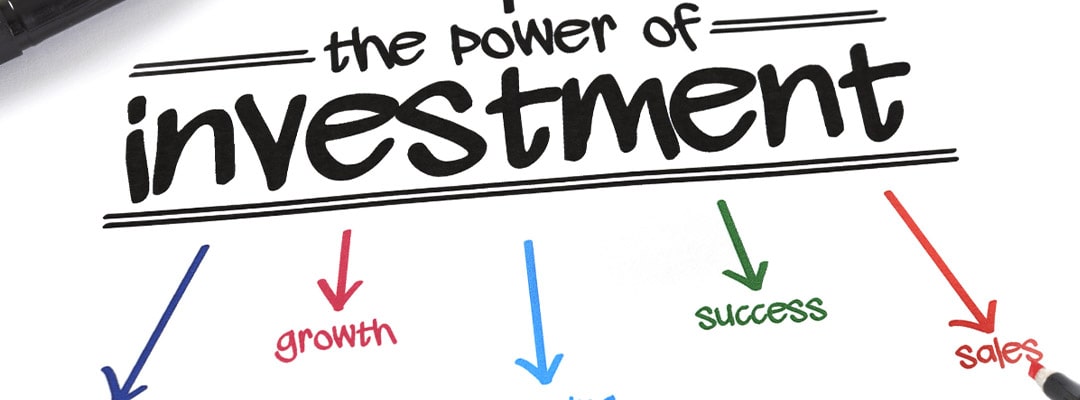Interested in conservative investments? These low-risk strategies focus on protecting your capital and ensuring steady returns. In this article, we’ll get straight to the point and discuss the best options for investors seeking stability and security.
Be sure to calculate your retirement score with the Institute of Financial Wellness (IFW) to see how you’re progressing towards your financial future!
Key Takeaways
- Conservative investing focuses on capital preservation and stable income, making it ideal for risk-averse individuals, especially those nearing retirement.
- Key low-risk investment options for conservative investors include U.S. Treasury securities, investment-grade corporate bonds, certificates of deposit, and blue-chip dividend stocks.
- Assessing personal risk tolerance is crucial to aligning investment strategies with financial goals, and tools like the IFW Retirement Score can guide retirement planning effectively.
For additional financial resources and expertise, be sure to attend the IFW Retirement Score Live Webinar!
Understanding Conservative Investments

Conservative investing isn’t just about playing it safe—it’s about protecting your hard-earned capital while still earning a reliable income.
Perfect for the risk-averse or those approaching retirement, this strategy prioritizes preserving your principal and avoiding market turbulence. Get the steady returns you need without the sleepless nights – let’s dive in!
The essence of conservative investing lies in its focus on capital preservation rather than high returns. This approach is designed to maintain the principal amount invested.
The primary goal of conservative investing is to safeguard one’s capital while generating a steady income stream, without exposing the investment to significant market risks.
Conservative investments typically include low-risk assets such as:
- U.S. Treasury securities
- Investment-grade corporate bonds
- Money market funds.
These investments are chosen for their stability and reliability in producing modest but consistent returns. The trade-off, however, is that such low-risk investments often yield lower returns compared to more aggressive investment options.
Aligning these investments with individual financial goals and risk tolerance is key to achieving desired financial outcomes.
An important note, as retirement approaches, investors often shift their focus towards reducing exposure to stock market volatility and protecting against inflation.
A conservative investing strategy can be particularly beneficial in this phase, ensuring that the capital remains intact while providing a reliable income stream to support one’s lifestyle during retirement.
Characteristics of Conservative Investors

Conservative investors are a distinct group characterized by their preference for security and stability over high-risk, high-reward opportunities.
These investors prioritize preserving their initial investment and seek out high-quality investments that offer stable and consistent returns. For many, the guiding principle is simple: if an investment seems too good to be true, it probably is.
Conservative investors typically build diversified portfolios that include a mix of bonds, money market funds, and other low-risk assets. This diversified approach helps mitigate risk and provides a steady income stream, aligning with their primary goal of capital preservation.
Investing conservatively allows them to navigate financial market uncertainties while protecting their savings.
Benefits of Conservative Investment Strategies

A conservative investment strategy offers several significant benefits, making it attractive for many investors. Some of the advantages include:
- Capital Preservation: Focuses on safeguarding your principal, minimizing losses even during market volatility—especially vital for those nearing retirement.
- Low-Risk Investments: Prioritizes low-risk assets like government bonds and cash equivalents, offering stability and reducing exposure to significant market risks.
- Steady Income Stream: Generates consistent income, making it ideal for retirees or those seeking regular income without the stress of high-risk investments.
- Inflation Protection: Utilizes inflation-protected securities to combat rising prices, preserving purchasing power and securing long-term financial stability.
- Portfolio Stability: Emphasizes maintaining current capital levels, ensuring a stable and secure investment portfolio in uncertain economic climates.
Types of Conservative Investments

A variety of low-risk investment options are available for those committed to a conservative strategy.
Each of the following investment types offers unique benefits and can play a crucial role in building a well-rounded, conservative investment portfolio.
U.S. Treasury Securities:
U.S. Treasury securities are often viewed as the gold standard for low-risk investments, primarily because they are backed by the full faith and credit of the U.S. government.
These securities include:
- Treasury bills, which have short maturities ranging from four weeks to one year
- Treasury notes, which have maturities ranging from two to ten years
- Treasury bonds, which have longer maturities of up to thirty years
Treasury bills are an excellent option for those seeking quick access to funds without significant value loss.
Additionally, Series I savings bonds offer a unique advantage by providing inflation protection, ensuring that the value of your investment keeps pace with rising prices.
Note, while Treasuries are considered low-risk, it’s essential to note that selling them before maturity can lead to fluctuations in value due to changes in interest rates, potentially risking the principal amount invested. However, the sheer size and liquidity of the U.S. Treasury securities market make them an attractive option for conservative investors.
Investment-Grade Corporate Bonds:
Investment-grade corporate bonds represent another viable option for conservative investors. These bonds are issued by large, financially stable companies with excellent credit ratings, typically classified as BBB or higher by S&P, or BAA or better by Moody’s.
Although they carry slightly more risk than U.S. Treasury securities, they offer higher yields, making them an attractive addition to a conservative investment portfolio.
When investing in corporate bonds, it’s crucial to manage interest rate risk by selecting bonds with shorter maturities. This approach helps mitigate the impact of rising interest rates on the bond’s value, ensuring that the principal remains relatively secure.
Certificates of Deposit (CDs):

Certificates of Deposit (CDs) are time deposit accounts offered by banks and credit unions, providing a fixed interest rate for a set period.
CDs are a secure investment option, as they offer guaranteed returns and are federally insured up to $250,000, protecting the principal amount [1].
To maximize returns, it’s advisable to shop around and compare rates from different banks to find the best combination of interest rates, terms, and deposit requirements.
It is, however, important to consider the implications of early withdrawal. Withdrawing funds from a CD before it matures can result in a loss of interest earned and, in some cases, even a portion of the principal.
For more flexibility, consider brokered CDs, which can be bought and sold on the secondary market, or no-penalty CDs, which allow early withdrawal without penalties.
Money Market Funds:
Money market mutual funds are another cornerstone of conservative investing.
These funds consist of pools of CDs, short-term bonds, and other low-risk investments, providing a safe and liquid option for investors in money markets.
One of the primary advantages of money market funds is that they allow funds to be withdrawn at any time without penalty, offering flexibility and easy access to cash.
While money market funds are generally considered safe, it’s essential to understand that they are not entirely risk-free. However, the FDIC protection of up to $250,000 on money market accounts adds an extra layer of security, making them a reliable choice for conservative investors seeking to preserve their capital while earning modest returns [2].
Blue-Chip Dividend Stocks:

Blue-chip dividend stocks are an excellent option for conservative investors looking to benefit from the stability and reliability of established companies.
These stocks are characterized by their large market presence, financial health, and history of consistent dividend payments. Companies like Coca-Cola, for instance, have demonstrated strong financial performance over the years, making them a safe bet for conservative portfolios.
Dividend stocks not only provide regular income but also help reduce portfolio volatility. Paying out a portion of their profits as dividends, these companies offer a steady income stream, beneficial during market downturns.
Fixed Annuities:
Fixed annuities are contracts with insurance companies that provide periodic payments in exchange for an initial investment.
These annuities consist of two phases:
- The accumulation phase, during which you make payments and earn tax-deferred interest.
- The payout phase, where you receive regular payments or a lump sum.
One of the primary benefits of fixed annuities is the steady income stream they provide, making them a popular choice for retirees seeking financial stability.
Building a Conservative Investment Portfolio

Constructing a conservative investment portfolio involves a thoughtful blend of various low-risk assets to ensure capital preservation and steady income.
A typical conservative portfolio includes a higher proportion of bonds and cash equivalents compared to stocks, minimizing exposure to market volatility.
Diversifying across different asset types mitigates risk and enhances the potential for stable returns. Regularly reviewing and rebalancing the portfolio ensures it remains aligned with your investment goals and risk tolerance, adapting to any changes in market conditions or personal circumstances.
How to Invest Conservatively

Investing conservatively starts with a deep understanding of your financial situation and clearly defined goals.
Aligning your investment strategy with these goals and timeframes ensures you are on the right path to financial security.
Consulting with IFW Certified Financial Professionals can provide valuable insights and tailored strategies to optimize your retirement distribution and improve your retirement score.
The Role of Personal Risk Tolerance

Risk tolerance is a personal measure of how comfortable you are with uncertainty and potential losses in your investments.
Those with higher risk tolerance may pursue aggressive investment options, while those with lower tolerance prefer conservative choices. Assessing your risk tolerance is crucial before making investment decisions to ensure that your strategy aligns with your financial goals and comfort level.
Indicators that you might need a conservative strategy include an inability to afford losses or a tendency to cash out during market volatility. Online risk tolerance assessments can help identify your comfort level with different investment risks, guiding you towards the best investment approach for your needs.
Protecting Your Portfolio from Market Volatility

Market volatility is a significant concern for conservative investors, who prioritize minimizing losses over maximizing returns. Building a portfolio with low-risk assets, such as U.S. Treasury securities and money market funds, can help weather market fluctuations.
Maintaining a short-term reserve equivalent to two to four years of living expenses provides a cushion during market downturns, ensuring that you can meet your financial needs without selling investments at a loss.
Understanding your retirement score can further help in minimizing tax liabilities and protecting your assets from market fluctuations.
This score provides insights into your financial readiness for retirement, allowing you to make informed decisions that enhance income stability and security.
The IFW Retirement Score and Its Importance

Retirement planning is crucial, especially for conservative investors who seek to minimize risks. The IFW Retirement Score is a valuable tool that helps assess your retirement readiness and guides you towards achieving financial security during retirement.
Understanding this score allows you to make informed decisions that align with your conservative strategy, ensuring a stable financial future.
What is the IFW Retirement Score?
The IFW Retirement Score quantifies the probability of achieving your retirement income goals, offering a clear, percentage-based assessment of your financial readiness.
This score ranges from 0% to 100%, with higher percentages indicating a greater likelihood of successfully meeting your retirement objectives. Powered by Monte Carlo Simulation, the score takes into account various financial scenarios to provide a comprehensive understanding of your retirement preparedness.
Understanding your retirement score can offer numerous advantages, such as potentially reducing or eliminating taxes in retirement, protecting your portfolio from market volatility, and securing a stable income stream.
By having a clear understanding of your retirement score, you can take proactive steps to enhance your financial future!
Summary
To conclude, balancing risk and reward through a conservative investment strategy is a prudent approach for those prioritizing capital preservation and steady income.
By understanding the characteristics of conservative investors and the benefits of low-risk investments, you can build a diversified portfolio that aligns with your financial goals and risk tolerance. Exploring various conservative investment options, from U.S. Treasury securities to fixed annuities, provides the foundation for a secure and stable financial future.
Tools like the IFW Retirement Score can further enhance your retirement planning, offering clarity and confidence in your financial decisions.
Embrace these strategies, and take control of your financial future with a balanced, conservative approach!
Frequently Asked Questions
What is the primary goal of conservative investing?
The primary goal of conservative investing is to preserve capital while generating steady income, safeguarding your principal from significant losses.
How do investment-grade corporate bonds differ from junk bonds?
Investment-grade corporate bonds are characterized by their issuance from financially stable companies with high credit ratings, indicating lower risk. In contrast, junk bonds are issued by companies with higher default risks, presenting the potential for higher returns but also greater uncertainty.
What are the benefits of knowing your IFW Retirement Score?
Understanding your IFW Retirement Score is essential as it allows you to evaluate your preparedness for retirement, mitigate tax burdens, safeguard against market fluctuations, and ensure a reliable income in your later years. This comprehensive insight empowers you to make informed financial decisions for a more secure retirement.
How can I improve my retirement score?
To improve your retirement score, consider enrolling in the IFW Retirement Roadmap Experience, which offers personalized strategies from a certified financial professional to enhance your financial future. This guidance can significantly boost your retirement preparedness.
What constitutes a diversified conservative investment portfolio?
A diversified conservative investment portfolio should include low-risk assets like bonds, money market funds, CDs, and blue-chip dividend stocks. This mix helps mitigate risk, preserves capital, and provides steady income.




